'Wandering meatloaf' creature has teeth of iron
Its teeth sport a rare iron mineral.

A weird mollusk, affectionately known as the "wandering meatloaf," has teeth made of a rare iron mineral, previously found only along rocky coastlines, a new study finds.
Researchers detected the rare iron mineral — called santabarbaraite — in the teeth of the rock-grazing mollusk Cryptochiton stelleri, nicknamed the "wandering meatloaf" because it looks just like one with its reddish-brown, up to 14-inch-long (36 centimeters) oval-shaped and shelled body.
The discovery sheds light on how C. stelleri can scrape food off rocks, the researchers said. "[Santabarbaraite] has high water content, which makes it strong with low density. We think this might toughen the teeth without adding a lot of weight," study senior author Derk Joester, an associate professor of materials science and engineering at Northwestern University in Illinois, said in a statement.
Related: Photos: 508-million-year-old bristly worm looked like a kitchen brush
The wandering meatloaf, which also goes by the names giant Pacific chiton and giant gumboot chiton, is the largest known species of chiton, a marine mollusk with an ovalish, flattened body that has a shell made of overlapping plates, just like a pillbug. Chitons are known for their remarkably hard teeth, which are attached to their soft, flexible tongue-like radula. While searching for food, chitons scrape their tooth-covered radula over rocks, in order to grab algae and other food.
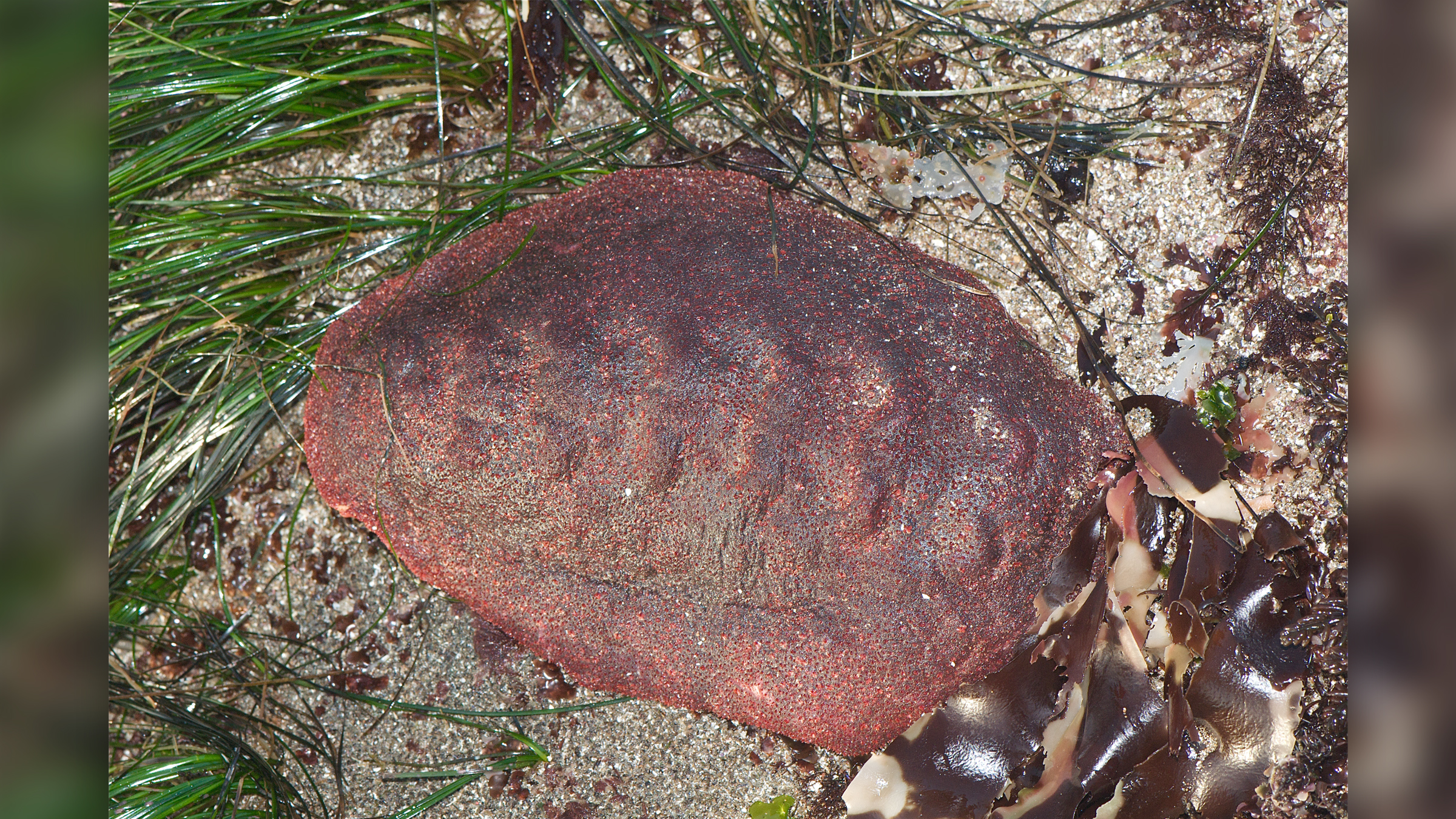
Joester and his colleagues had previously studied chiton teeth, but they wanted to learn more about the stylus — the hollow structure that's akin to the root of a human tooth, and which "connects the [chitons'] ultrahard and stiff tooth head to the flexible radula membrane," the researchers wrote in the study. They did this by analyzing C. stelleri's chompers with a few high-tech techniques, including a synchrotron light source and transmission electron microscopy.
These analyses revealed the santabarbaraite in the chiton's upper stylus. "This mineral has only been observed in geological specimens in very tiny amounts and has never before been seen in a biological context," Joester said.
Get the world’s most fascinating discoveries delivered straight to your inbox.
The discovery shows how this weird meatloaf uses its whole tooth, not just the ultrahard, durable cusp, to collect food, the researchers said.

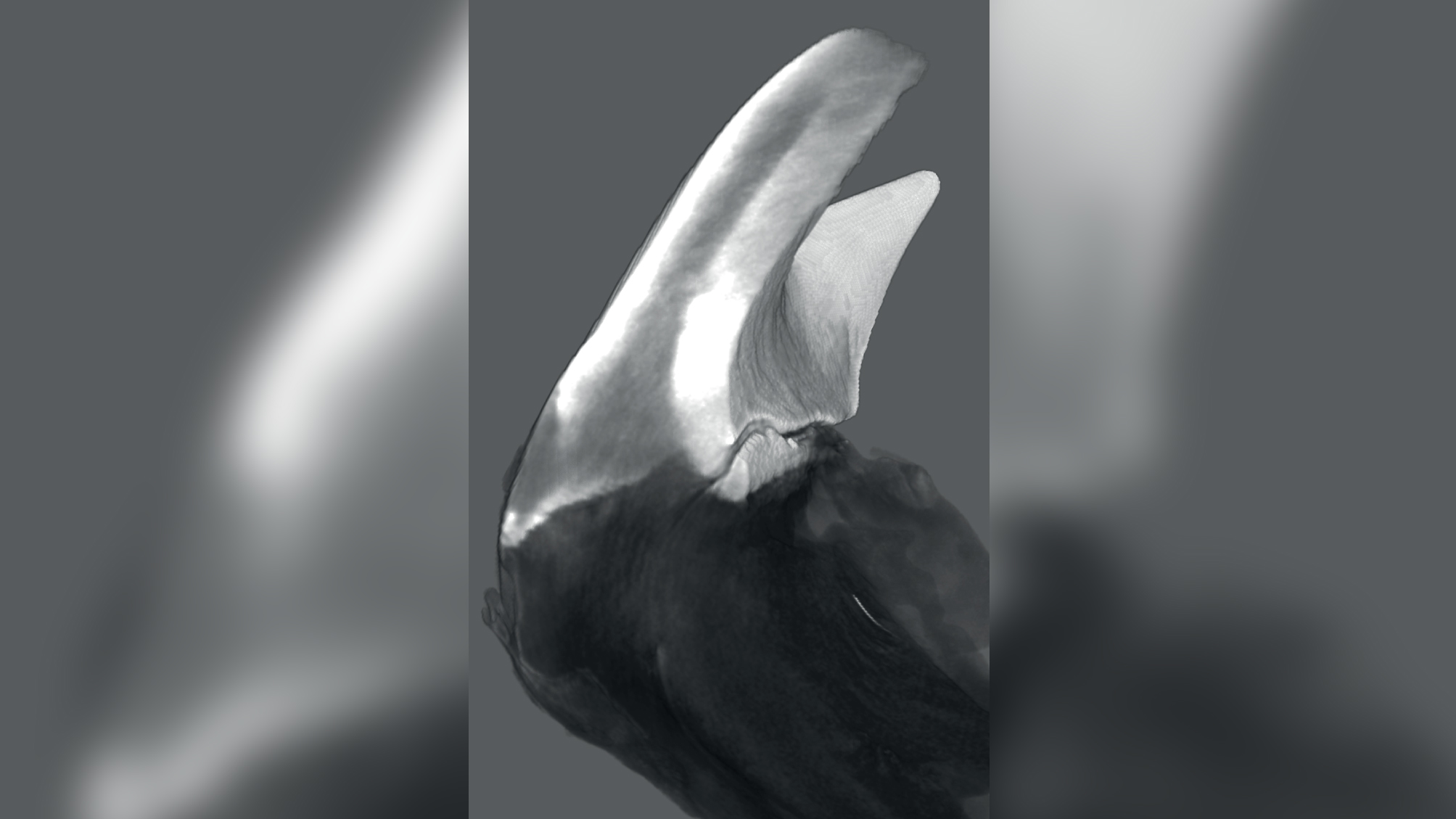
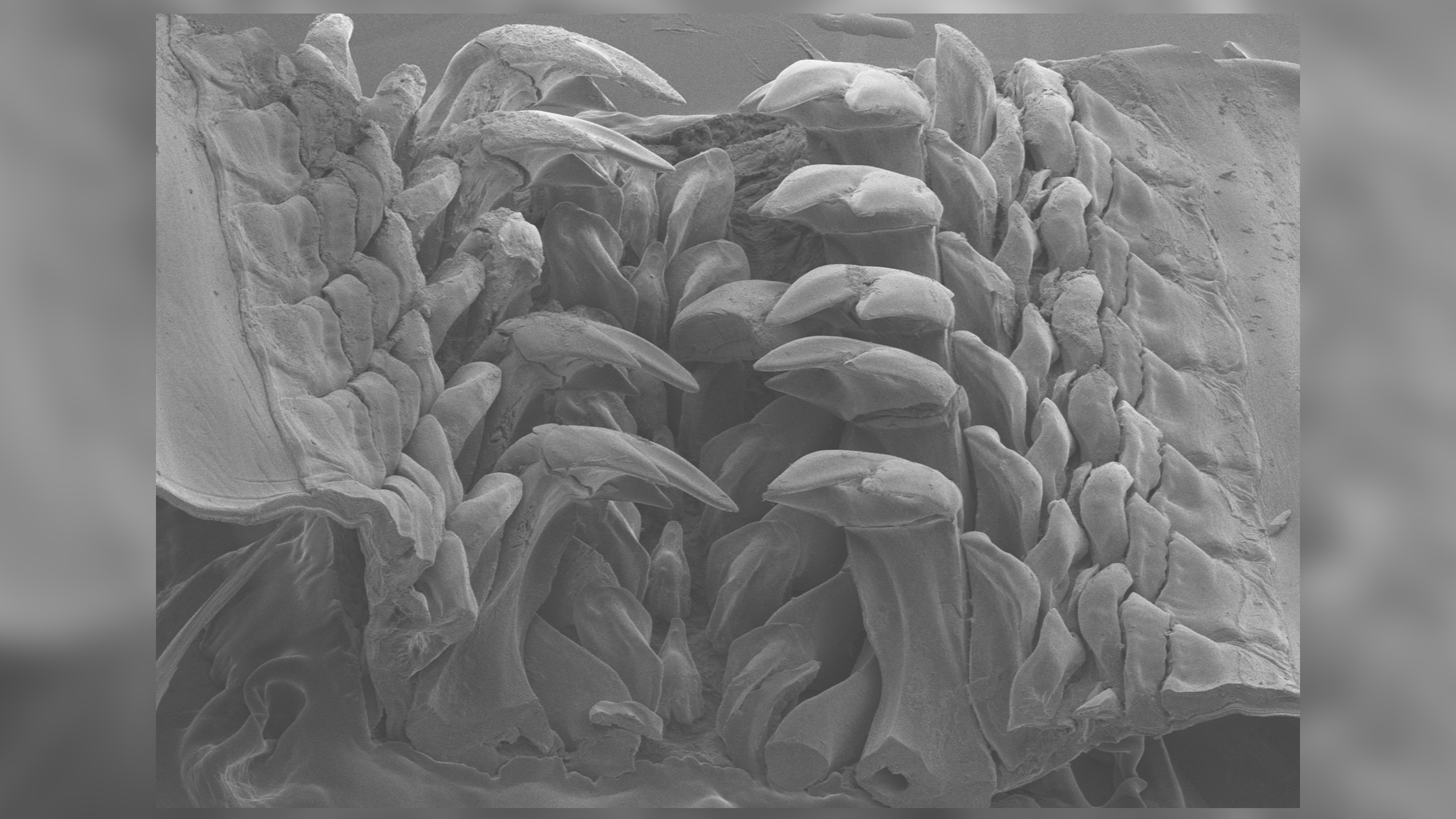
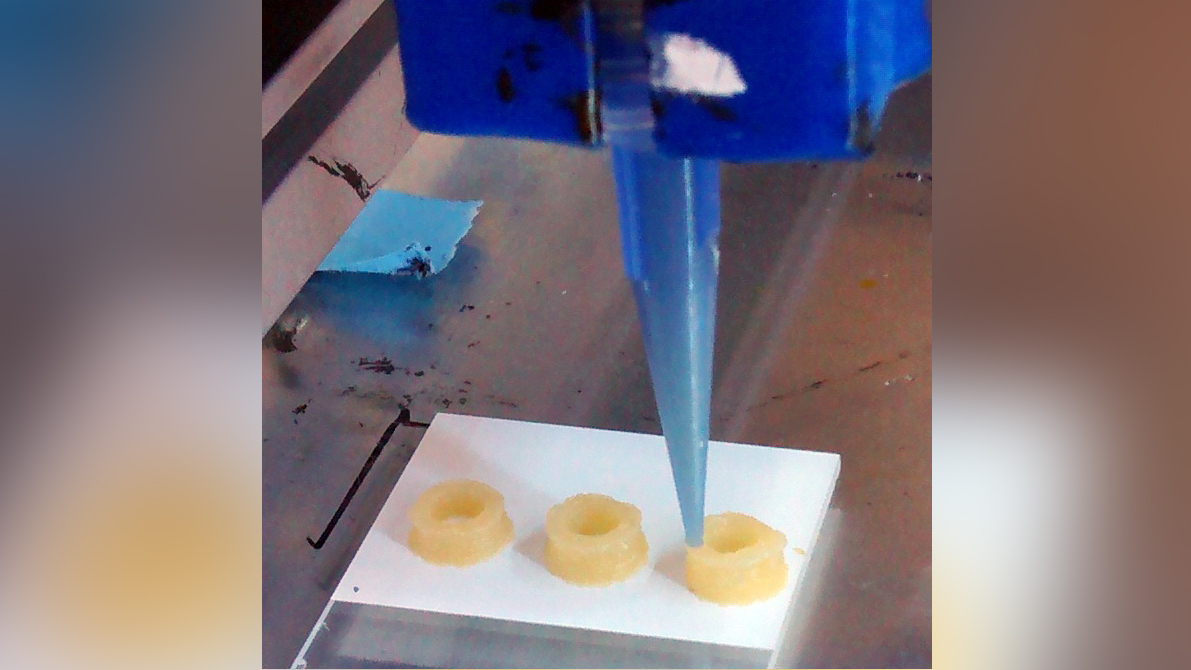
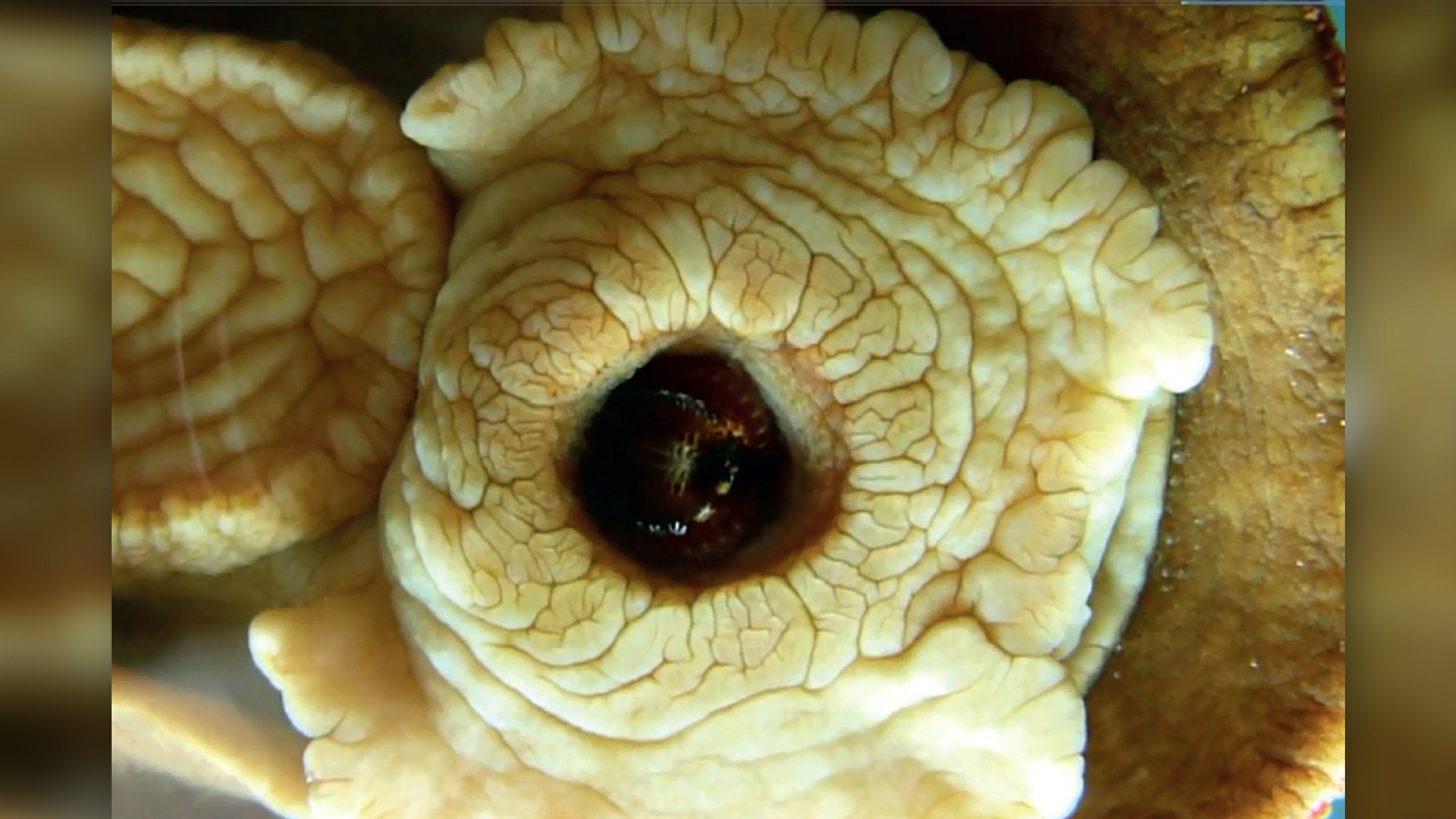
Next, the team tried to recreate the stylus's chemical makeup with an ink designed for 3D printing. Study first author Linus Stegbauer, a former postdoctoral fellow in Joester's laboratory, developed the ink with iron and phosphate ions mixed up with a biopolymer derived from the chiton's teeth. Stegbauer, who is now a principal investigator at the Institute of Interfacial Process Engineering and Plasma Technology of the University of Stuttgart in Germany, and colleagues found that the experiment worked — the ink printed ultrahard, stiff and durable materials, as long as the scientists mixed it immediately before printing.
"As the nanoparticles form in the biopolymer, it gets stronger and more viscous," Joester said. "This mixture can then be easily used for printing. Subsequent drying in air leads to the hard and stiff final material."
The study was published online Monday (May 31) in the journal Proceedings of the National Academy of Sciences.
Originally published on Live Science.

Laura is the managing editor at Live Science. She also runs the archaeology section and the Life's Little Mysteries series. Her work has appeared in The New York Times, Scholastic, Popular Science and Spectrum, a site on autism research. She has won multiple awards from the Society of Professional Journalists and the Washington Newspaper Publishers Association for her reporting at a weekly newspaper near Seattle. Laura holds a bachelor's degree in English literature and psychology from Washington University in St. Louis and a master's degree in science writing from NYU.


